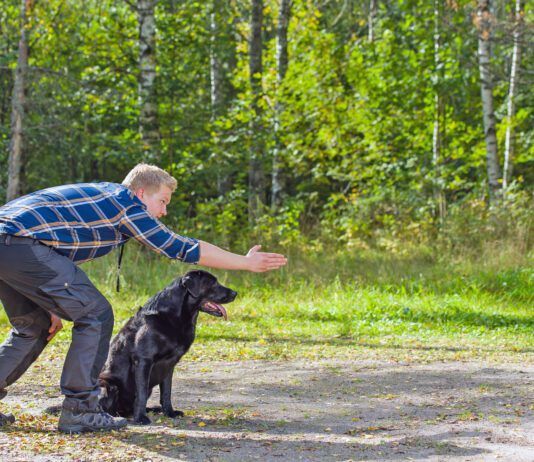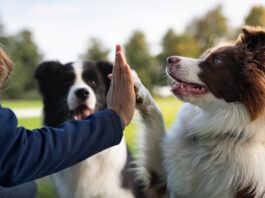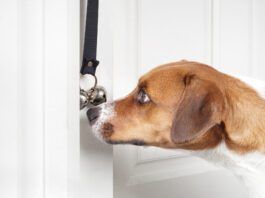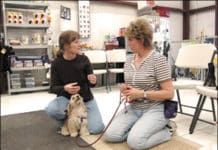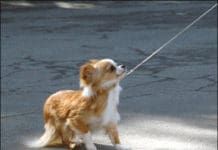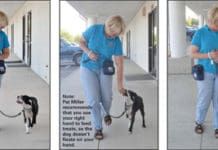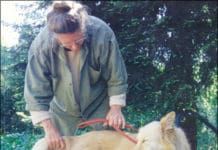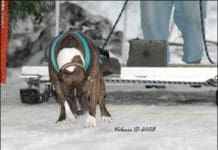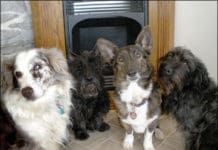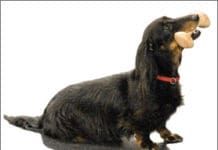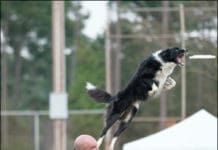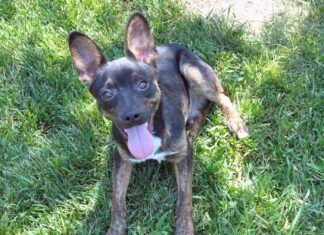How To Find The Best Dog Trainer For Your Dog
People have many questions when it comes to dog training: Lure-reward training or clicker training? Group classes or private lessons? Basic obedience or beyond? What type of trainer is best for dealing with your dog's behavior challenges? Finding the right trainer is an important piece of the training puzzle. Dog training is an unregulated industry; anyone can hang up a sign and instantly become a dog trainer. If you mix some decent Web-authoring skills with a college-level book on public relations, even yesterday's Fed-Ex clerk can have the Web presence of a seasoned dog training professional.
When Your Dog Refuses To Walk On A Leash
It’s frustrating and embarrassing when your dog puts on the brakes and refuses to move. If he’s small you can pick him up and carry him; although that might not be the best training solution, at least it gets you out of there and you can save face. But what if it’s a Great Dane, a Newfoundland, or any breed – or combination of breeds – that’s too big to be portable?
How to Train Proper Leash Walking – Pull Over!
One of the more frustrating experiences for positive dog trainers is watching their clients being dragged by their dogs across the parking lot toward their cars, just moments after training class is dismissed. “Dang,” we sometimes think, “Will they ever teach their dogs to walk politely on-leash? What part of ‘Don’t reinforce your dog for pulling!’ didn’t they hear?” Of course, it’s equally frustrating for dog owners when their dogs drag them. And the training solution – stopping every time the dog pulls – gets tiresome.
The Tellington TTouch For Dogs
of Berkeley
Competitive Canine Weight Pull
a 24-pound
Using Your Dog’s Bowl As a Training Tool
You may think feeding your dog is a simple matter of dumping food in his bowl and plopping it down on the floor in front of him. You may be wrong. Mealtime is fraught with significance for your dog, and loaded with opportunities for you to influence his health and his behavior. Failure to take advantage of these could actually contribute to the development and/or escalation of problems that might otherwise be averted. A few deliberate decisions and choices on your part can go far in creating harmony in your home.
Canine Sports: Tracking
The sport of American Kennel Club (AKC) tracking started out as a stepchild to its competition obedience Utility Dog (UD) title. Although you needed to pass a separate tracking test to earn your UD title between 1936 and 1946, tracking garnered a one-paragraph description in the rules and regulations of the time. Fans of tracking pushed for changes in the rules as a result of increased understanding of scent work and, in 1947, tracking became a separate class. The Tracking Dog (TD) title was the only tracking title available until 1980 when the Tracking Dog Excellent (TDX) title was added.
Canine Sports: Competitive Obedience
You could hear a pin drop. The bleachers and chairs are jammed with an audience holding its collective breath as the handler-dog team on the floor completes their final exercise in the American Kennel Club's (AKC) National Obedience Invitational, an annual event that tests the best in the sport. The team that wins this final round has competed for several days in multiple classes, demonstrating the mental and physical stamina, as well as the training chops
Training Small Dog Breeds
There’s a reality show that airs on TLC called Little People, Big World that chronicles the daily lives of the Roloffs, an Oregon family made up of both small (both parents are under 4 feet tall) and average-sized people. The series tastefully portrays how every day activities and seemingly uneventful situations can affect the family members differently based on their size and how society views them. Most importantly, it successfully shows that size does matter, particularly in a society built for the average-sized person. I just wish there was a show, or at least an effective way to get that point across regarding small dogs. They and their owners have long been misjudged and misunderstood.
Canine Water Sports for Aquatic Service Dogs
The curly brown dog stamped his feet and stared at his handler. He had retrieved the plastic dummy countless times. Now what? Something as simple as that look is all it took to start Kathryn Monroe of Mahtomedi, Minnesota, on a quest. It would ultimately take her across the country in search of the knowledge and skills to train her Portuguese Water Dog, Gaucho, to do what his breeding dictated. Work. Water work, specifically. Like many people, Monroe had gotten involved with a breed because she was looking for a dog with an affinity for something she loved. Monroe is a boater. When asked if she had water sports in mind when she chose a PWD, she said, Water sports? I hate water sports! I don't swim
Canine Sports: Herding Competitions
Fetch. Drive. Flank. Come-bye. Go-bye. Way to me. Outruns. Flight zones. Pressure point. That'll do! The sport of herding has a unique vocabulary that distinguishes it from all the other canine sports. In addition to basic obedience cues such as sit, down, stay, and come, dogs are trained to respond to cues that tell them when to start moving livestock, in which direction to move them, when to stop moving them, when and how to move them into pens, and how to use their physical presence to pressure the stock to move but not to scare them into running or stampeding. There is dirt, there is dust, there is livestock that can break bones and bruise a body, and there is livestock poop. And herding teams love it all.
Disc Dog Competitions
The cattle dog-mix races across the turf, his claws digging into the ground, pushing hard into his next stride, building momentum, faster, faster, faster. With a final turbo blast powered by his rear legs, he pushes off the ground and vaults into the air, seemingly weightless as he stretches his neck into the sky. A sudden twist of shoulders propels his torso and hips 180 degrees as he changes direction midair and snatches the prize from the air - a simple, round plastic disc. Eyes alight with the thrill of the chase and the kill (catch), he lands nimbly and races back to his handler. Can we do it again? Can we, can we? Yeah, we can. This is the sport of disc dog. It's been around since Frisbees became popular in the early 1970s and the players' dogs chased the players' errant tosses. When a bad toss resulted in a disc rolling on its side, that was fine by Fido.


